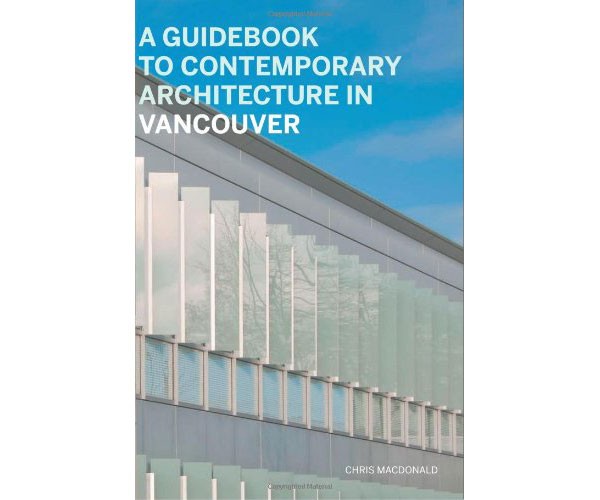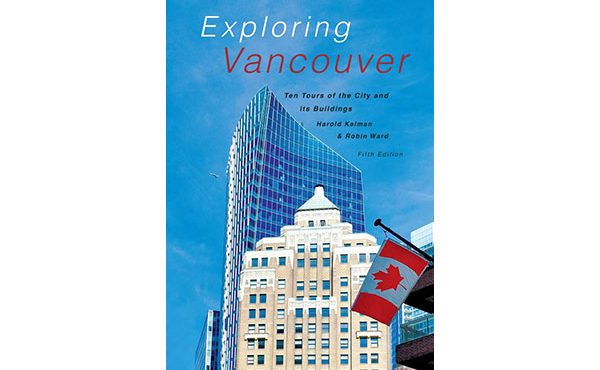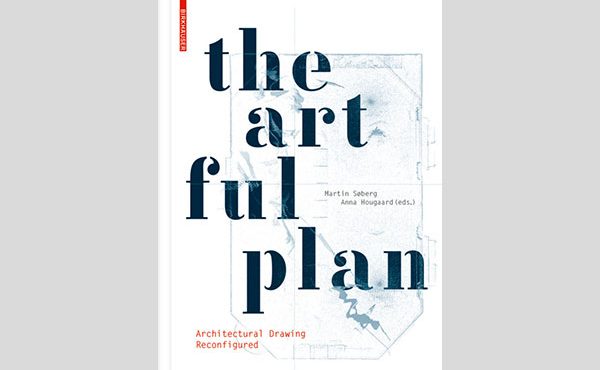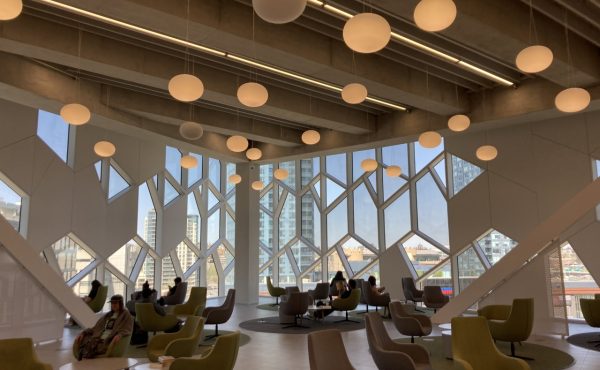“To observe the city’s architecture is to enter into the optimistic vision of its planners and designers and so to engage in the work-in-progress that is Vancouver. The city’s sense of becoming can at times be palpable – an unusual experience in the face of architecture’s qualities of stability and endurance.”
– From the guidebook’s introduction
Edited by Christopher Macdonald & Veronica Gillies (Douglas & McIntyre Publishers, 2010)
With the recent publication of two similar architecture guidebooks of Toronto and Montreal, A Guidebook to Contemporary Architecture in Vancouver (D&M Publishers, 2010) completes the triptych. Guided by Helen Malkin (who along with Nancy Dunton also assisted with the other two guidebooks), and with the support of the RAIC and Canada Council for the Arts, UBC professor of architecture Christopher Macdonald and architect Veronica Gillies have assembled a current collection of contemporary architecture from Vancouver and its region. As bookends to the projects presented, two essays by architecture critic Adele Weder and UBC assistant professor Matthew Soules round out the guidebook.
In all, the 58 projects presented, as categorized by the 21 environs that give the book its structure, unequivocally represent Vancouver’s more recently celebrated architectural achievements, with each project having already received numerous accolades in the form of architectural awards and publications.
While the book aspires to be more than just a guidebook of local architecture’s ‘usual suspects’, this as it turns out is quite a difficult thing to do when given the small time period in which the book’s editors have chosen to frame its content – between Expo ’86 and the 2010 Vancouver Olympic Games. Of the book’s 58 projects, 35 are by nine of the region’s most well recognized offices: Arthur Erickson (5), Peter Cardew (2), Peter Busby (7), Norm Hotson & Joost Bakker (2), James Cheng (2), Paul Merrick (2), Bing Thom (6), John and Pat Patkau (2), and Richard Henriquez (6). Just as important, the editors have included Vancouver’s younger generation of architects and designers, including Battersby Howat, HCMA, Martin Lewis, LWPAC, Acton Ostry, AA Robins, and Pechet & Robb.
There is an inherent aspiration by the book’s authors to debunk the ‘starchitect’ myth by offering up several projects that demonstrate larger collaborations between firms, such as those that were orchestrated to realize the former Expo lands, the stations along the Millennium and Canada Lines, the buildings and urban spaces realized for the sites for the Olympics, as well as the realization of the new Woodwards development, which the late Jim Green attested to there being in addition to Henriquez Partners over one thousand consultants to bring to fruition..
Perhaps the book’s biggest revelation is the collection of modest but important buildings that have recently been realized for the University of British Columbia at Point Grey. A new building each by both Henriquez Partners and the Patkaus can now count themselves among many of the other architectural gems that have appeared at Vancouver’s university over the years, including the late Arthur Erickson’s Museum of Anthropology.
As a ‘contemporary’ guidebook, the editor’s admit that the time period of the book regrettably omits the aforementioned museum, along with Robson Square and the Law Courts. Instead, we get more recent projects realized in collaboration with Stantec and Nick Milkovich, perhaps as an exploration of what it means to be contemporary. The book’s editors say as much as they dedicate the book to Mr. Erickson, adding that “in his distinguished designs for Vancouver he has taught us all much about architecture, and much about what it might mean to be contemporary.”
Also significant is the inclusion of Vancouver’s heritage architecture, as its been upgraded for modern building code standards, such that the book features the Electra, Mole Hill, and of course Woodwards – it may have also included the Marine Building and Sinclair Centre. Also regrettably absent from the book are the buildings from Expo ’86 themselves, as Canada Place and the new Trade and Convention Centre could’ve been featured in tandem, as well as the old Space & Science Centre alongside the new Olympic Village.
But without doubt the guidebook’s greatest merit is its honesty, as it unflinchingly portrays the downtown east side and the way architecture can perhaps have a role in the healing of ‘Canada’s poorest postal code’. The book also devotes 45 pages to Vancouver’s satellite communities, featuring such projects as the Richmond Olympic Oval, Brentwood Skytrain Station, and Surrey Central City.
Accompanying the 160 colour photographs in the book are 40 plans and sections provided by the architects themselves, offering a visually rich graphic counterpart to the photography of Vancouver’s urban scenography. As such, the book succeeds in appealing to the Vancouver local, while an excellent guide for tourists in much the same spirit as Harold Kalman’s Exploring Vancouver (1974, 1978, & 1993). As interesting as the projects themselves, the geographical regions the projects occur in are well summarized, and introducing some never before categorized areas of Vancouver. I was happy to see Point Grey and Commercial Drive, places often omitted from more conventional architecture guidebooks.
The editor’s candour is likewise refreshing, not pulling back from the controversies some of the buildings have created since their opening. As an example, for Library Square they point out how “the exterior elevations bereft of the two primary galleria entries remain dismal.” And the inclusion of infill projects in the downtown east side shows the inherent possibility of architecture to create positive change in what could be otherwise forgotten and abandoned city areas. And lastly, as would be expected of any book on Vancouver architecture, there are numerous examples of sustainable and environmental design, as many projects featured are LEED certified, with the book itself even providing transit stops for those visiting each building or group of buildings.
Overall, the guidebook does not disappoint either as a tourist’s guide to contemporary Vancouver architecture, or as a folio for the local Vancouverite, featuring some of its newest and brightest urban projects (even including the new Informs interior and hip ‘Salt’ in Gastown, both by Busby Perkins + Will). Along with some older post-Expo favourites, it makes for an indispensable reference for local architects and designers, historians and educators alike. Most importantly, with A Guidebook to Contemporary Architecture in Vancouver completing the set on the nation’s three largest cities, these books contest to a continuing thriving industry of national architecture despite our current economic slowdown, and are a testament to the talent, new and old, that collectively defines our architectural culture.
***
Editor’s note: This review was previously published March 25, 2010.
Sean Ruthen is an architect working, living, and writing in Vancouver.






One comment
You can have a look or borrow this book from the Toronto Public Library:
http://www.torontopubliclibrary.ca/detail.jsp?Entt=RDM2632820&R=2632820